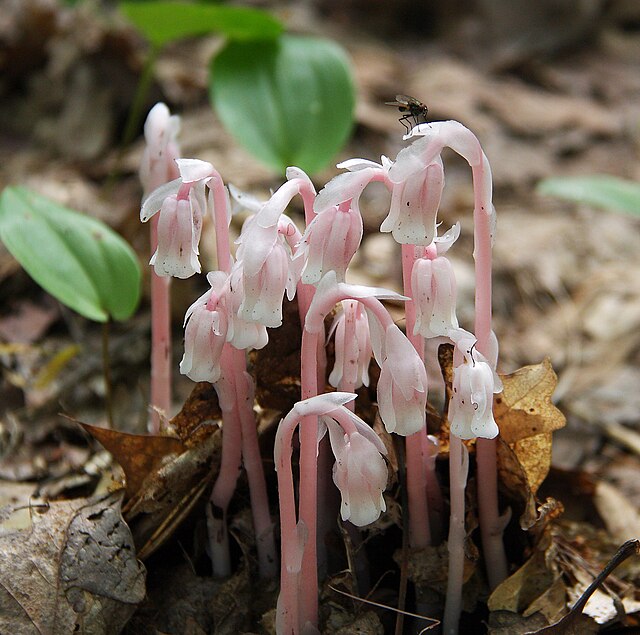Saprotrophic nutrition or lysotrophic nutrition is a process of chemoheterotrophic extracellular digestion involved in the processing of decayed organic matter. It occurs in saprotrophs, and is most often associated with fungi and soil bacteria. Saprotrophic microscopic fungi are sometimes called saprobes. Saprotrophic plants or bacterial flora are called saprophytes, although it is now believed that all plants previously thought to be saprotrophic are in fact parasites of microscopic fungi or other plants. In fungi, the process is most often facilitated through the active transport of such materials through endocytosis within the internal mycelium and its constituent hyphae.
Mycelial cord of fungi made up of a collection of hyphae; an essential part in the process of saprotrophic nutrition, it is used for the intake of organic matter through its cell wall. The network of hyphae is referred to as a mycelium, which is fundamental to fungal nutrition.
Myco-heterotrophy is a symbiotic relationship between certain kinds of plants and fungi, in which the plant gets all or part of its food from parasitism upon fungi rather than from photosynthesis. A myco-heterotroph is the parasitic plant partner in this relationship. Myco-heterotrophy is considered a kind of cheating relationship and myco-heterotrophs are sometimes informally referred to as "mycorrhizal cheaters". This relationship is sometimes referred to as mycotrophy, though this term is also used for plants that engage in mutualistic mycorrhizal relationships.
Monotropa uniflora, an obligate myco-heterotroph known to parasitize fungi belonging to the Russulaceae.
Myco-heterotrophic roots of Monotropa uniflora with Russula brevipes mycelium



